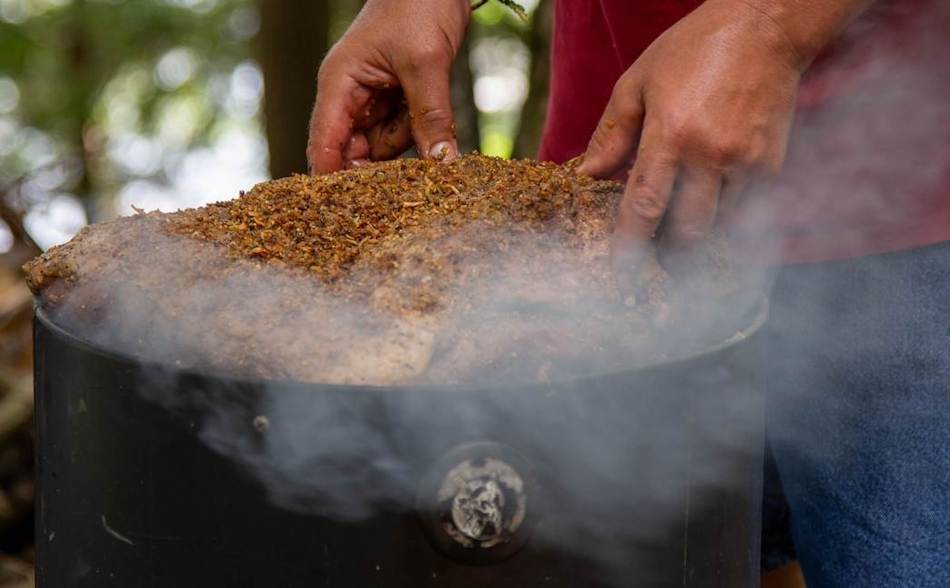
The last stage of the brisket cook is one of the most important stages. You don’t want to overcook the brisket or it will turn out dry, and you don’t want to take it out of the smoker too soon, otherwise it will be chewy.
Signs Your Brisket Is Done
It takes experience to recognise the signs of a perfectly cooked brisket. Timing is everything, and training your eye to know what to look for is key. Knowing when to remove your brisket is a skill. Just as understanding when to spritz or wrap a brisket is knowledge gained by experience.
- The internal temperature is somewhere between 195°F and 205°F.
- When you pick up the brisket, it should have a nice jiggle as you hold it up.
- When you insert a thermometer probe or toothpick, it should feel like butter.
Time And Temperature vs Look and Feel
The best way to learn is by watching the masters like Aaron Franklin or Malcolm Reed. More often than not, pitmasters make decisions based on “look and feel” rather than cook times or internal meat temperature. Thermometers are handy tools, but they don’t give you the full picture. Below is what the perfectly cooked brisket should look and feel like.
What To Look For
When trying to decide when a brisket is done, make your decision based on a combination of these things:
- 1. Colour
- Tenderness
- Internal temperature
- Total cook time
What’s The Best Internal Temperature?
When deciding whether to pull your brisket, internal meat temp is one indicator. Temperature isn’t everything, but it will let you know when you are within range.
A brisket could reach perfect doneness anywhere between 195°F and 210°F. No two briskets are the same, so when it reaches perfect temperature will vary. In general, a brisket is done when it reaches around 200° F. Many experts believe the magic number is 203° F. I always aim for 200°F, but will check for tenderness in the 190s. If it’s tender at 195°F, then I’ll pull it. If the brisket needs longer, then I may go beyond 205°F. Every brisket and every cook should be treated differently.
Monitor The Color
When a brisket is done, it should look like a black meteorite. It may not look appealing, but after several hours absorbing smoke, the brisket should have a nice, black bark.
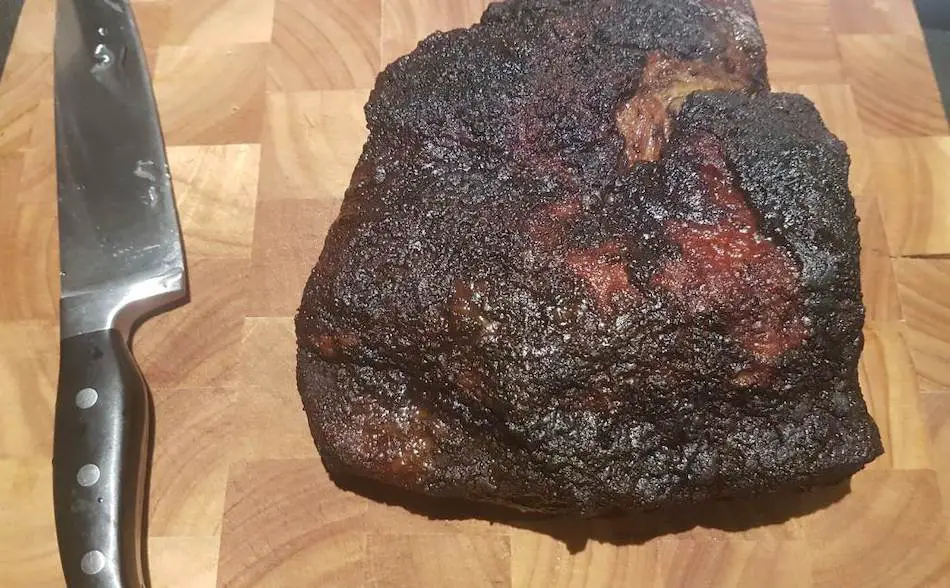
Go By Feel
The toothpick test is the easiest way to tell is a brisket has reached perfect tenderness. When you insert a toothpick into the meat, it should feel like butter—no resistance. You can also use your thermometer probe to perform this tenderness test.
How To Test For Tenderness
Begin checking your brisket when it approaches the 190°F. You may notice some resistance as you probe the meat. Continue checking as it cooks towards the 200°F range. Once the internal temp reaches the 200°F range, you almost no resistance.
The Jiggle Test
The jiggle test is another way pitmasters confirm they’ve cooked the perfect brisket. When you hold up a slice of brisket, it should have a nice jiggle to it. If the slice doesn’t jiggle but is a little stiff, then it’s not very tender. There should also be moisture dripping from the slice. That’s a sign the brisket is tender and juicy.
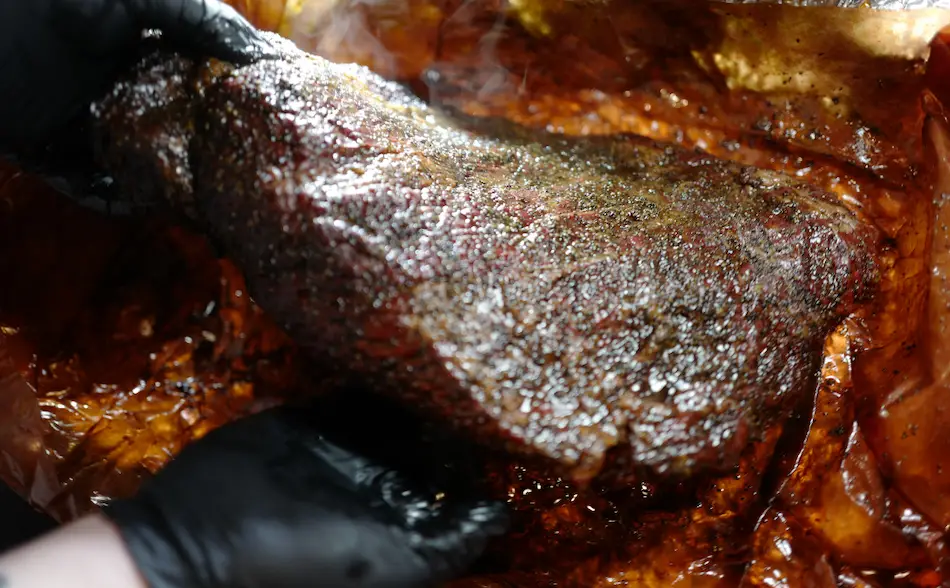
The Pull Test
When you hold up the slice of brisket, it should pull apart easily, but still hold up its own weight. The meat should pull apart easily, but not give way under its own weight.
What if you pull Brisket Too Early?
According to the USDA, brisket is safe for consumption when it reaches an internal temperature of 145° F. If you pulled a brisket from the smoker at this temp, the meat would be far too chewy. Brisket contains a lot of fat and connective tissue that needs time at low temperature in order to break down. Taking the brisket to an internal temp of 200°F is the only way to tenderise the brisket to the point where connective tissue melts and turns into a gelatin.
So don’t make the mistake of following the USDA guidelines and removing your brisket at 145°F. At this temperature, the connective tissue will still be firm and have elasticity. Tender meat either contains no connective tissue, or the connective tissue has melted.
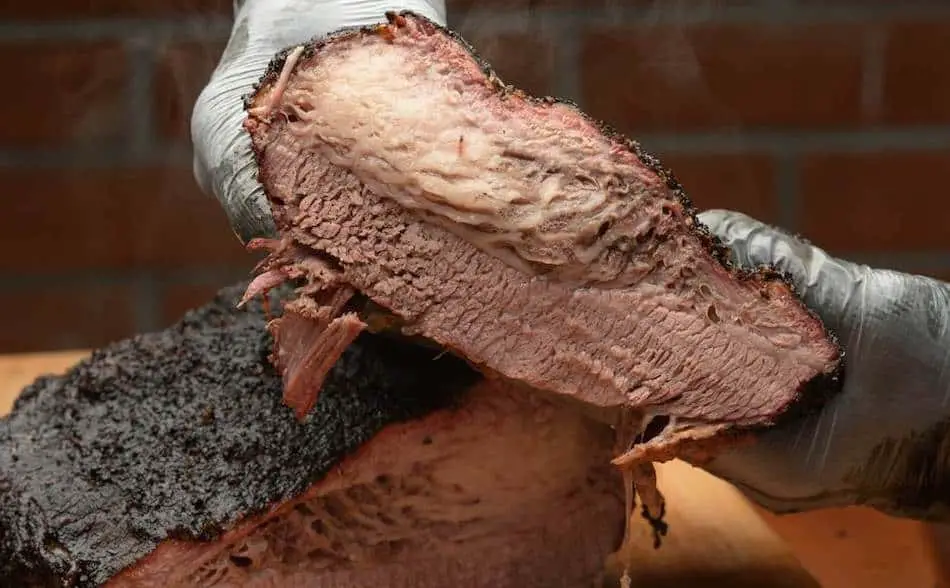
When Does Aaron Franklin Pull Brisket?
Pitmaster Aaron Franklin allows for roughly 1 hour and 15 minutes per pound if you’re cooking brisket at 250° F. I find this to be an accurate guide.
So if you’re cooking an 8 lb brisket, you looking at about a 10 hour cook. If you’re cooking at 225° F, then you will need more time. If you’re cooking an 8 lb brisket at 225°F, then it will take around 12 hours. However, these are only estimates. There are so many variables when cooking brisket, but its still good to have a guide.
Using Instant-Read Thermometers
During the last stages of the cook, this is where instant-read thermometers come into play. If you don’t have one, would highly recommend looking into it. Your main thermometer will give one reading, but brisket is uneven you need to test in multiple areas within a few seconds.
Keep in mind that not all briskets are the same. No two briskets are the same. One week you might cook a 5 lb brisket and it will take 12 hours, and the following week you have another 5 lb brisket and it will take 14 hours.
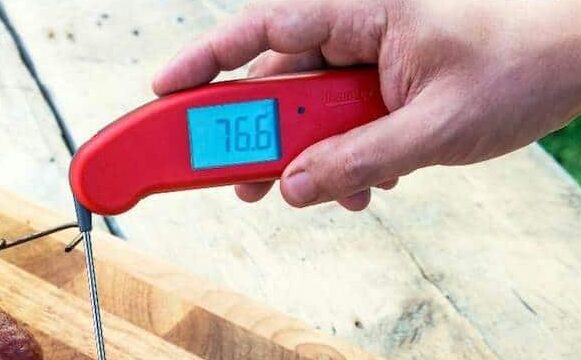
How Long Do You Rest Brisket?
You should rest your brisket for about 1 hour. If you pull the brisket from the smoker, it’s going to be really hot and all the muscles are still going to be all tight. As the brisket cooks, the muscles tighten up and it pushes out all the moisture. So if you pull the brisket off the smoker, all those muscles are still going to be tightening and pushing out moisture. By allowing it to cool down, the muscles in the brisket will relax, and it will begin to reabsorb some of the moisture rather than push it out. If you were to slice the brisket immediately after pulling it from the smoker, all the precious juices will spill out onto the cutting board. This is is one of the main reasons people end up with dry brisket, because they don’t allow enough time for a rest.
Deciding When To Wrap – Look For The Signs
When deciding when to wrap the brisket, often you should look at the colour. Pitmasters look for colour more than anything during the first stage of the cook. Those fist 5 hours are all about hardening the bark and absorbing smoke. During this first phase, the brisket should develop a dark colour. It will begin by looking sort of almost mahogany, but in the end it will be dark.
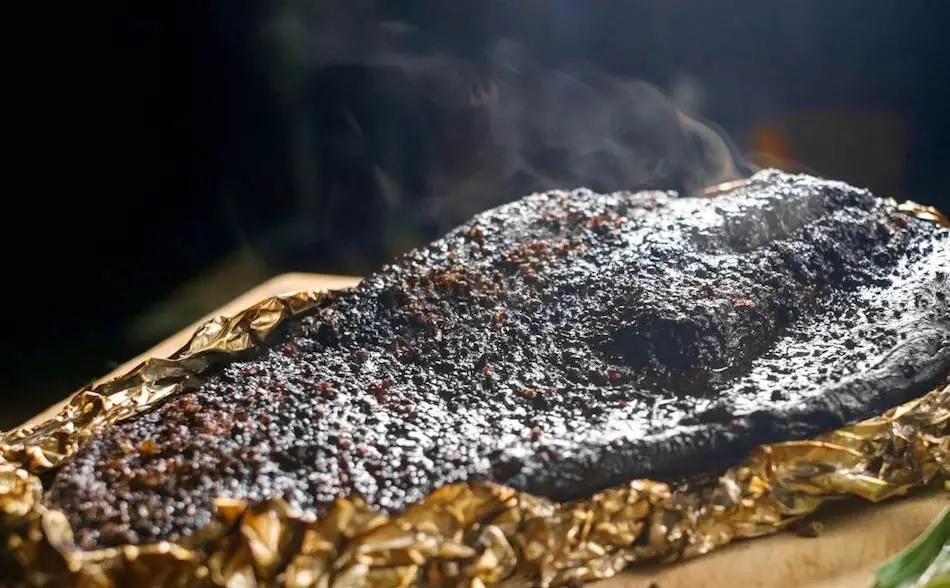
When To Wrap Brisket
Once the park is starting to crack, and it has a nice dark colour, then it’s time to wrap the brisket. Some people go by strict time or restrict internal temperature, but it’s best to go by looking feel. However, if you’re still not confident knowing when to wrap, there’s nothing wrong with going by time and temperature. I think you’ll find wrapping should occur at around 5 or 6 hours into the cook. The internal temperature should be well passed 150° F and heading towards the store which usually occurs between 160 and 170° F. You definitely want to wrap it before it reaches that 160° F otherwise you’re not going to push through the stool.
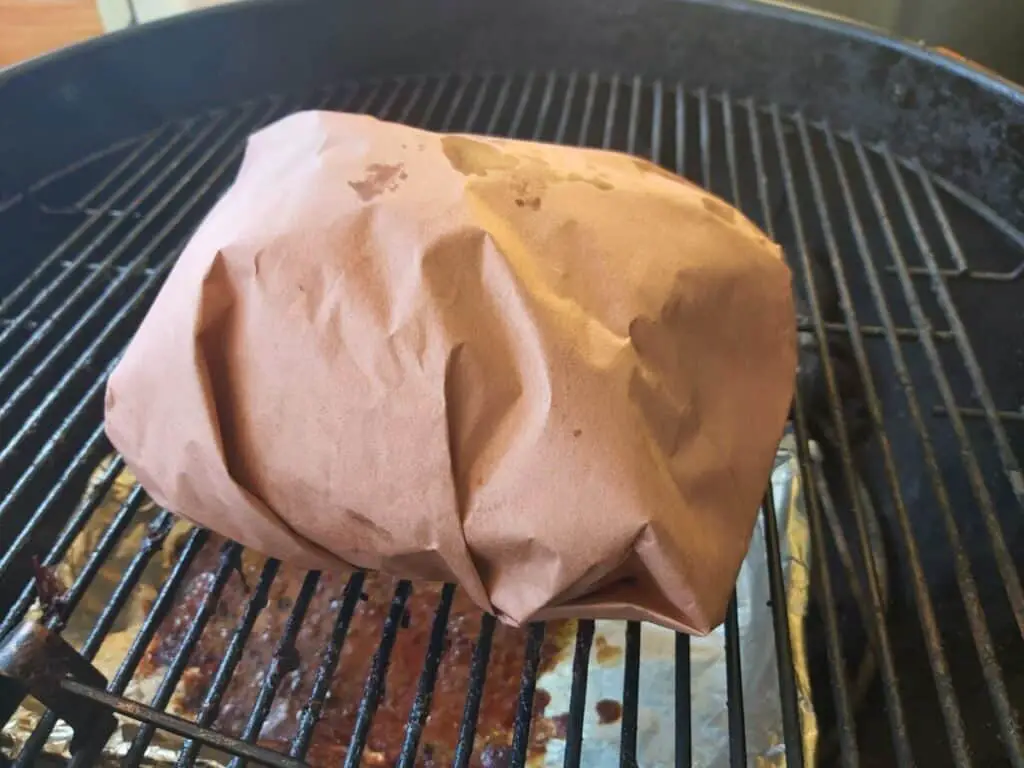
When To Spritz Brisket
You don’t want to spritz the brisket too early, otherwise some of your rub or wash off. Also, spritzing too often will cause your smoker to fluctuate and destabilise your cooker. Start spritzing when the meat is drying out. This usually occurs in the last few hours before wrapping. Spritzing will bring out a nice colour, and help the rub fuse to the meat.
I would recommend leaving the brisket alone for the first 3 or 4 hours. Then begin doing some assessments. If you notice somebody edges are looking a little dry, then it might be time to give them a little spritz. You can use apple cider vinegar, apple juice, or plain water to spritz. Some people use beer, wine, broth or stock. It doesn’t really matter, it’s not really going to add anything to the flavour.
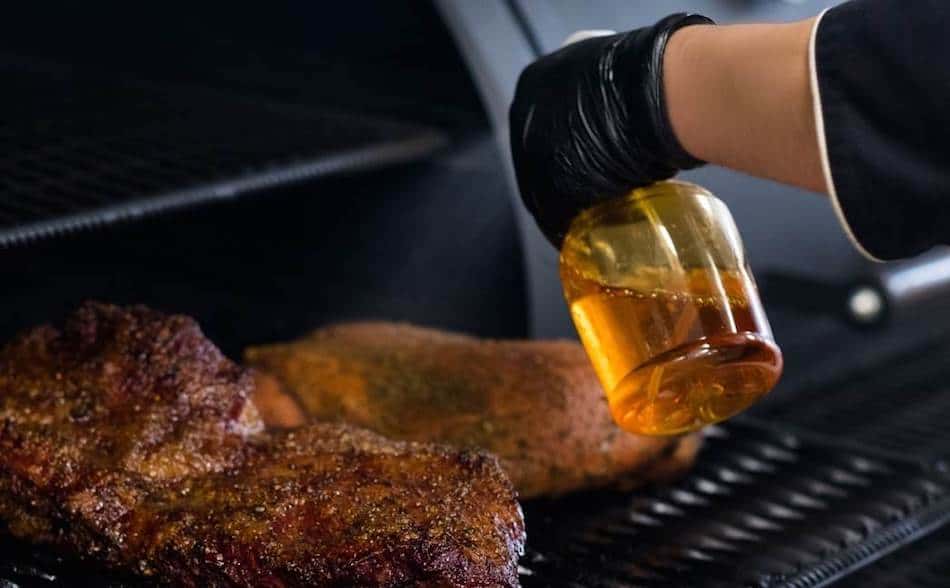
Using A Remote ‘Leave-In’ Thermometer
You most important tool when smoking brisket is leave-in meat thermometer, and an instant-read thermometer. It’s very difficult to navigate your way through a brisket cook without these tools. There are a lot of accessories for barbecue and meat smoking, but thermometers are a must have. However, you need to get quality thermometers because if you buy a cheap product, you’re wasting your money. If a thermometer is inaccurate, then what’s the point?
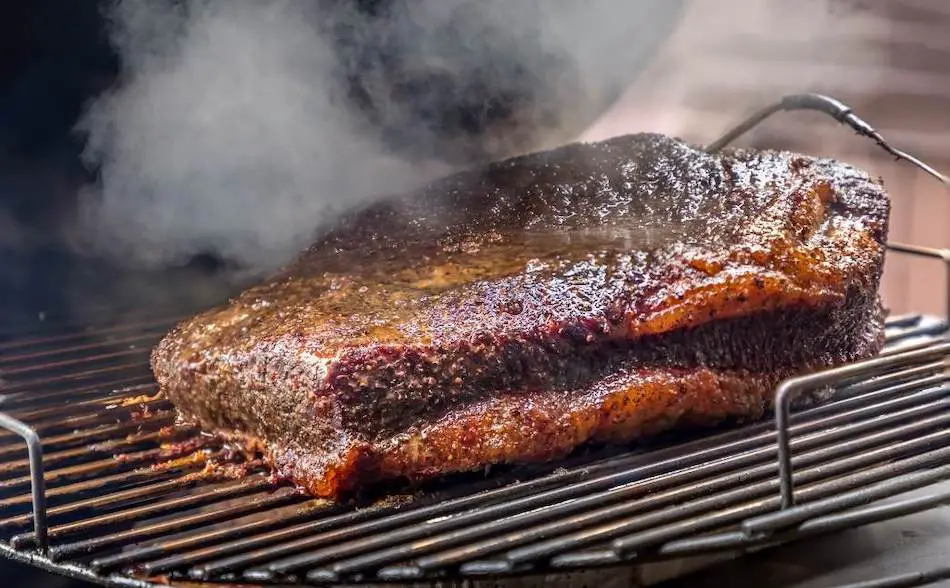
Brisket Total Cook Time
Keep a journal of your previous cooks. Write down the times and temperatures, the size of your brisket etc. You can learn a lot from your previous cooks, and it’ll help you with your planning. Also, one of the best ways to learn is by learning from your mistakes. There are so many variables when smoking brisket, so it’s good to have some control.
Thermometers like the Fireboard 2 or MEATER record all your cook data. This gives you access to a lot of old session data because it gets automatically uploaded to a cloud. This allows you to go back over your previous cooks which makes future planning easier. Several thermometer companies are going down this road now, you have access to this with a The smart thermometer is such as MEATER, Meatstick and Airprobe 3 are leading the way in this space.
Graphing Your Brisket Cook
Reading a graph from your thermometer is like reading an EKG or looking at a heart monitor. You can see how the internal temperature climbs, then flattens during the stall. The graphing and data helps take a lot of the guesswork out of smoking brisket, and helps you to diagnose any problems.
My Favorite Brisket Tools
Thanks for checking out this article. I hope you learned a few things. Here are some of my favorite tools I use when smoking brisket that may be useful to you. These are affiliate links, so if you decide to purchase any of these products, I’ll earn a commission. But in all honesty, these are the tools I recommend to my family and friends who are just starting out.
Meat Injector: Injecting meat is a great way to take your barbecue to the next level and help you make competition-style brisket. An injector is the only way you will be able to get flavor and moisture into the middle of the meat. The Beast Injector is a stainless steel injector that is sturdy and affordable. Check the latest price on Amazon here.
Brisket Marinade: The best injection solution on the market is the Butcher BBQ Brisket Injection. This marinade is used in competitions and is made by World Barbecue Champion pitmaster, Dave Bouska. You can find the marinade on Amazon here.
Butcher Paper: Wrapping brisket in butcher paper has become a huge trend in barbeque thanks to Aaron Franklin. Wrapping your brisket in paper will give you a nice brisket bark. However, you can’t just use any old paper, it has to be unwaxed, food grade paper. You can find it on Amazon here.
Brisket Rub: These days I make my own rub when possible, but I always have a few pre-made rubs for when I’m running low. Barbecue guru Malcom Reed produces Killer Hogs, one of the best brisket rubs I’ve found over the years. Another great rub is Slap Yo Daddy, made by brisket master and multiple World Barbecue Champion, Harry Soo.
Meat Thermometer: There are dozens of fancy thermometers on the market, but I still use my trusty TP20. For around $50, I have a high-quality meat thermometer with two probes, and can track the temperature of my smoker with one probe, and my meat with the other probe. The ThermoPro TP20 is an Amazon Best Seller because it’s the easiest thermometer to operate, is durable, highly accurate, and comes with pre-programmed meat settings.
Instant Read Thermometer: Arguably, the second most important tool you need is a fast and accurate instant-read thermometer. These tools play an important role in the latter stages of the cook when the meat needs regular checking in multiple areas. I use the ThermoPro TP19 because it can do everything a ThermaPen can do, but for a fraction of the cost. You can check out the TP19 on Amazon here.
Advanced Thermometer and Automatic Temperature Controller: Once you’re ready to take things seriously, the FireBoard 2 Drive is a six-channel Bluetooth/Wi-Fi thermometer that can monitor up to 6 pieces of meat, control and graph your cook sessions on your smartphone, and attaches to an an automatic blower that will convert your charcoal smoker to a set-and-forget. This is one of the most advanced meat thermometers on the market. You can check it out on the FireBoard website here.
